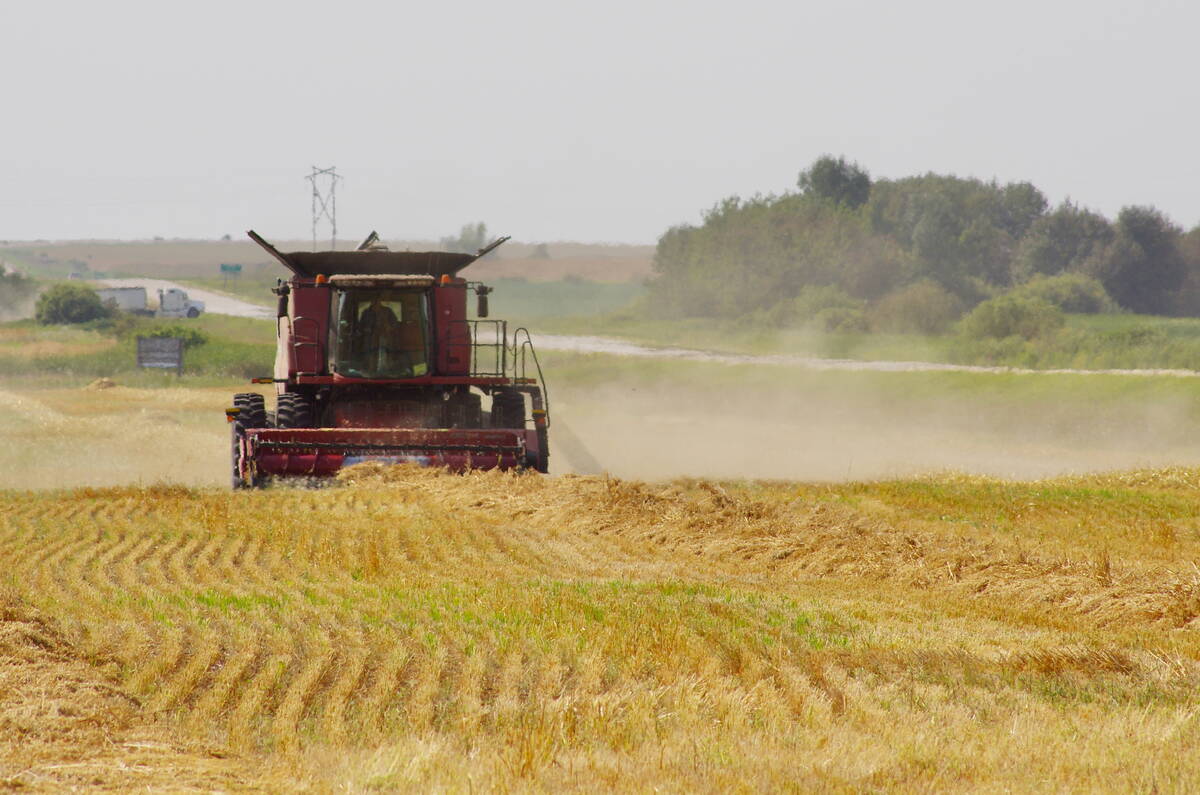REGINA – In places where it’s dry, give taller stubble a try.
That’s the message from more than a decade of research originating from Canada’s driest agricultural research centre. It has shown yield increases of up to 14 percent where additional stubble is left for the next crop.
Herb Cutforth at the Swift Current, Sask., Agriculture Canada research centre said producers with farmland that regularly experiences drought should consider going long when it comes to stubble.
Where Cutforth works, one in every four years is characterized as a severe drought.
Read Also

Herbicide resistance sprouts in Manitoba’s wild oats
Farmers across Manitoba this fall are gearing up for the latest salvo in what, for many, has become a longtime battle to beat out wild oats.
He said water is the one element many producers in the southern Prairies can’t control, but they can improve the water efficiency of their crops by up to 12 percent by moving from short stubble to extra long.
“The positive effect of tall stubble on snow trapping is well documented, and you all know it,” he said, addressing farmers at the Seed Master, Master Seeders conference in Regina, Nov. 5.
In addition to adding moisture, stubble reduces crusting that hinders crop emergence.
Research by Cutforth and fellow Agriculture Canada scientist Brian McConkey found large reductions in evaporation in longer stubble.
As well, the effects of the microclimate created by stubble of 30 centimetres or longer benefited crops beyond the seedling stage.
On warm days in the height of summer, plant temperatures were found to be up to 5 C higher in cultivated soils versus crops seeded in 30 cm stubble.
That isn’t a critical issue for wheat and pulse crops, but oilseeds such as canola will suffer yield loss due to higher temperatures.
Plants were found to use similar amounts of water regardless of stubble height, but as stubble height increased, water losses to the atmosphere declined, leaving plants able to convert the available water into higher yields.
Effective windbreaks
Research showed that wind speed at the soil surface, for 30 to 35 cm stubble, is 32 percent of that of a cultivated field. Stubble of 15 to 20 cm experiences 85 percent of the wind speed of cultivated ground.
Soil evaporation drops by five percent for 15 to 20 cm stubble and 30 percent for 30 to 35 cm stubble.
“Wind plays a large role in how a plant allocates its resources. A plant that is experiencing stress from wind will be shorter, have thicker stems and smaller leaves … and yield less,” said Cutforth.
Most recently researchers at Swift Current began looking at taller stubble of 45 cm.
“We weren’t sure if the trends to greater yields would continue. They did,” he said.
Yield across three crops, wheat, chickpeas and canola, saw a seven percent increase from cultivated soil to short stubble. An additional three percent yield gain, for a total of 10 percent, was delivered for plants in 30 to 35 cm stubble and four more percentage points in yield increase for a total 14 percent yield gain, came as a result of 45 cm stubble.
Reaching the loftiest of those yield increases requires stubble management at seeding.
Chris Vanderstoel of Pense, Sask., made the move to very tall stubble through the use of a stripper header.
He said moving from tall stubble to something that often exceeds 45 cm has delivered a greater snow catch and a microclimate that is delivering increased yields on his farm.
“I am seeing an extra inch of soil moisture. That is a lot in our part of the world,” he said, referring to his Regina plains location.
Seeding between the stubble rows with a Seed Master Smart Hitch has allowed him to keep last year’s plants rooted while planting.
Keeping to 10 or 12 inch row centres also allows enough room to get the next crop in the ground with help from systems that ensure producers’ seeding units can run effectively between the rows.
Franck Groeneweg of Edgeley, Sask., said using both RTK and a guided hitch ensures he gets most of his seed planted between the stubble rows.
Researchers in Swift Current lacked the technology to place their crop between stubble rows, said Cutforth.
“Work done at Brandon has shown there is very little difference in performance between a short and long stubble … you might find the lack of air flow down low may cause some disease issues, but at Swift Current we certainly don’t see it as a serious issue,” he said.
As well, he said less sunlight caused by shading from taller stubble also seemed to be more than offset by the higher productivity.
Seed grower Del Gates of Mohall, North Dakota, attended the Regina event and said the black strip that his hoe drill creates between the rows helps to improve soil warming in spring, even with tall stubble.
















